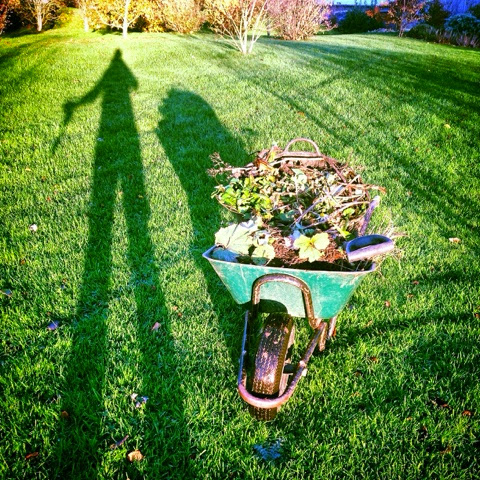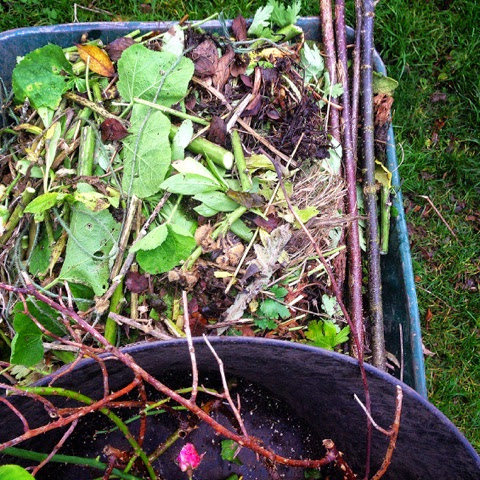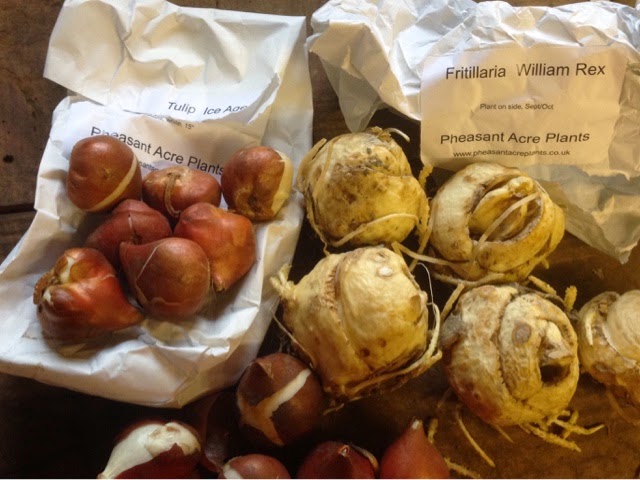They could stay in the ground but a particularly cold or wet winter might finish them off. Storing them inside eliminates most rotting problems. Come the Spring I will get them out and help them back into growth so they can be the superstars of the herbaceous borders. They are particularly wonderful during the mid-summer slump - when there can be a dullness in the garden - the Spring/Early Summer beauties are spent and the late Summer stalwarts are yet to show their faces; so I treat these Dahlia tubers like royalty.
⭐️ First of all, I cut all the foliage off and carefully dig up the tubers - then I stand them upside down and leave them alone for a couple of weeks in the potting shed (but any cool, dry, mouse-free shed or room will do) thus allowing any excess moisture in the stems to dissipate.
⭐️ A couple of weeks later I carefully brush the soil off the tubers and I make sure that any named varieties are clearly labelled - every tuber should have a label with it's flower colour and whether it has a single or a double flower. I secure the label with a piece of string knotted around a bit of tuber and stem.
Now, I whip out my secret magic ingredient - not so secret anymore - into which the Dahlia tubers will be stored.
⭐️ Vermiculite - wonderful stuff (a natural mineral)
Vermiculite will keep the tubers warm and dry throughout the winter.
I line a crate with newspaper or cardboard so the vermiculite won't leak out. I put a fine layer of magic vermiculite on the bottom of the crate onto which I place the tubers, close together but not too tightly packed.
⭐️ Finally, I cover the tubers with more vermiculite. This year I am trialling a space saving scheme - in a couple of the crates I have placed a second layer of tubers and then repeated the vermiculite covering. Double decker Dahlias if you will.
I cannot see that I will have any rotting problems but I will report back.
Lastly, I push the crates underneath the greenhouse staging and forget about them.......well, not entirely; every couple of weeks or so I will check that the tubers are nice and solid still, and that no rots have set in, by giving them a quick prod. I will also give the crates a sprinkling of water (definitely not a gert great soaking) so that the tubers don't completely dry out.
Life as a Dahlia under my watch is pretty sweet. Slugs look out - early next summer when the Dahlias are in full leaf again.......don't even think about it because you will not win this fight. I will be armed and ready for you.




















